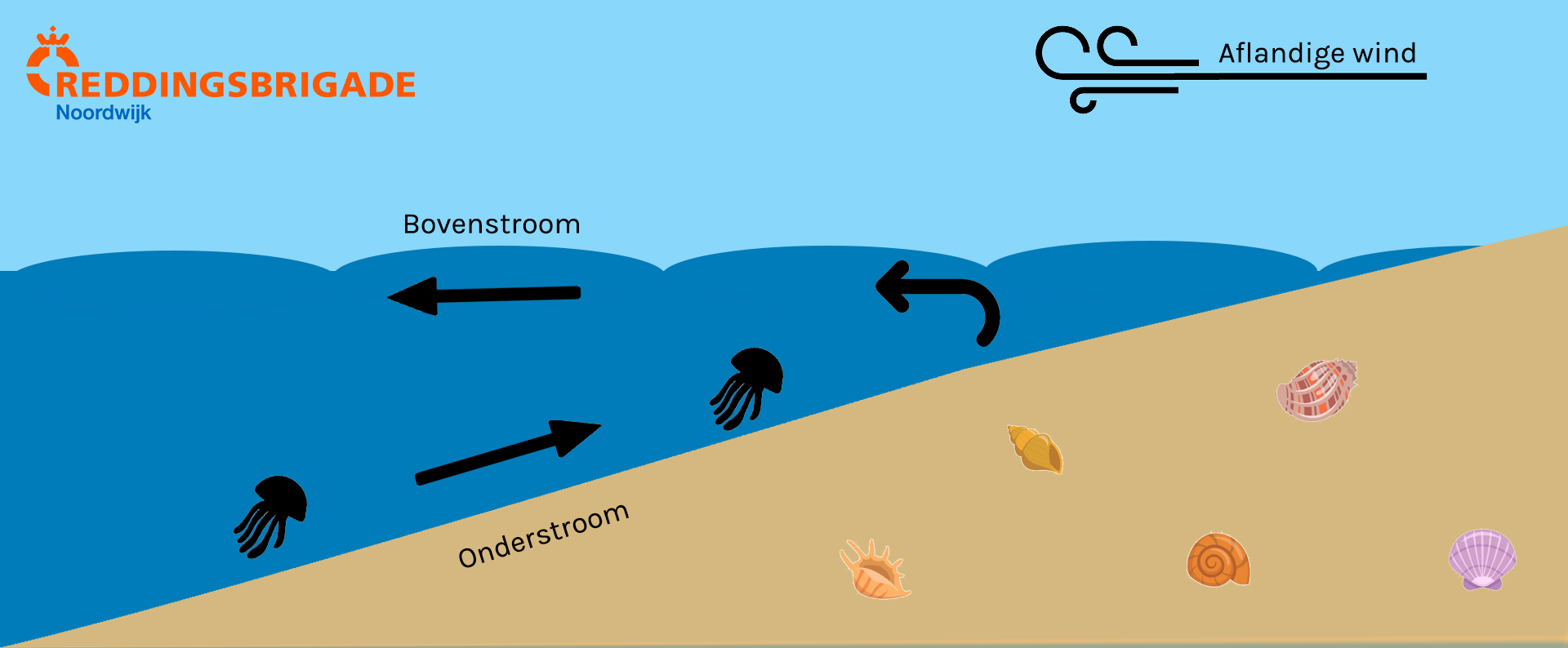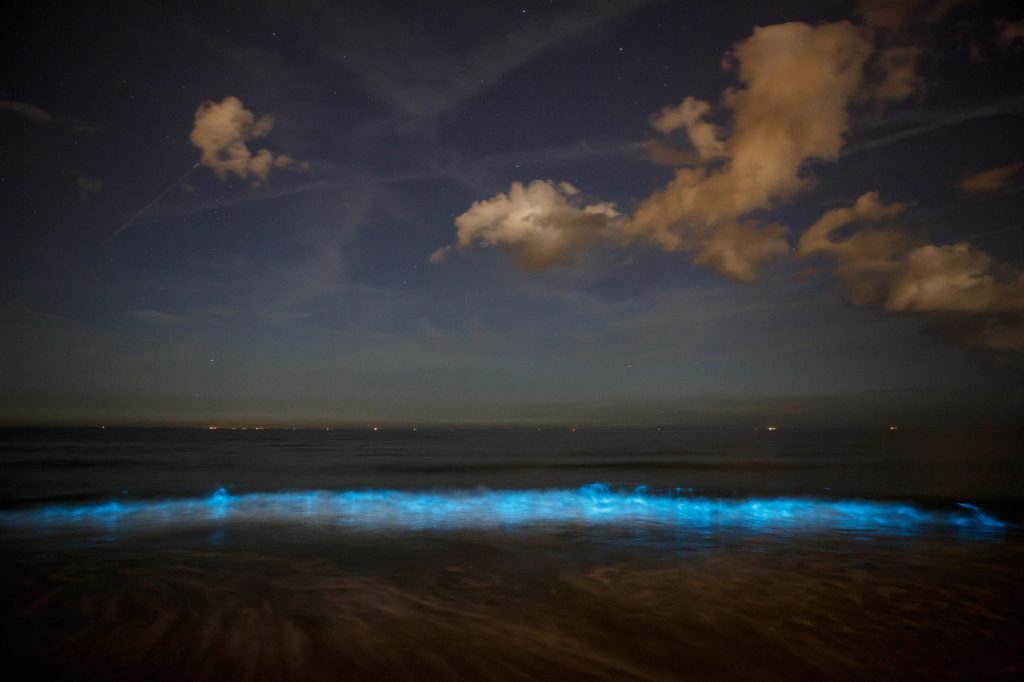Jellyfish
Several species of jellyfish are found in the North Sea. These marine animals allow themselves to be carried away with the undertow. Because of this, the jellyfish are often seen in offshore winds, the undercurrent then moves towards the beach.
The jellyfish native to the Netherlands pose no danger to humans. The jellyfish have stinging cells filled with venom. When these stinging cells come into contact with the skin, a burning sensation occurs, this sensation is similar to that of contact with a nettle. The venom of the sea mushroom and the ear jellyfish are almost imperceptible. The compass jellyfish and the yellow and blue hair jellyfish do sting palpably.
If your skin has been in contact with these stinging cells, it is advisable not to itch. By itching/scratching you destroy the stinging cells and the poison will give off the burning sensation. It is advisable to have the nettle cells washed away by seawater. The burning sensation usually goes away after half an hour. If you come out of the water, it is advisable to find a place in the shade.


Seals
As lifeguards, we are committed to ensuring safety on the beach and in the sea for both people and animals. On busy beach days it sometimes happens that a young seal comes ashore to rest between the bathers. To ensure the safety of both humans and animals, we support the EHBZ.
Porpoise
A porpoise on the beach is always an animal in distress.
If you find a washed-up porpoise, dolphin or whale while walking on the beach, it is an animal in distress and in urgent need of help.
To this end, the experts at SOS Dolphin have established the following four rules:
- Blowhole: A porpoise or dolphin breathes with the blowhole on its head. The animal on the beach is probably weakened and unable to swim. If water or sand gets into the blowhole, the animal may drown or suffocate. Therefore, never push the animal back and always lay it flat on its belly!
- Rest: A porpoise or dolphin on the beach is easily startled. Walk quietly, keeping people and dogs at a distance. Max 1-2 people near the animal;
- Cooling: A porpoise or dolphin on the beach gets too hot quickly. Cool the animal with water and wet cloths and provide shade;
- Help! Call SOS Dolphin immediately and take good care of the animal until help arrives on the scene. The emergency number is 06-65098576. This is the emergency number of SOS Dolphin and is manned day and night.
Care for the animal until a trained EHBZ worker is on scene to take over the care.
Pieterman
The weever is a small fish found in the North Sea. They burrow into the sand in shallow water, where they then lurk for prey fish. The weever is one of the most poisonous animals in Europe. The dorsal fin contains 5-8 dorsal spines from which poison comes out.
Because the weever burrows into the sand, you may stand on it and get the spines in your foot. This results in complaints of very intense pain that can last 20 to 50 minutes. Swelling may occur at the level of the puncture wound. Some people also experience symptoms such as a splitting headache, palpitations, fever, dizziness and vomiting.
The poison cannot withstand high temperature. Therefore, the treatment is to keep the stung spot in hot water (40-45 degrees) for at least 15 minutes. The hot water neutralizes the poison. Start with lukewarm water and add more and more hot water until the person indicates that it is getting too hot.
Sea Spark
The sea spider is a single-celled organism and belongs to the group of plant algae. In warm weather, in shallow water, especially when the sea is calm after a violent storm, a show can be seen on the beaches. Through movement, a chemical reaction causes light to emanate in the waves and in footprints of beach walkers and around people swimming in the sea. This reaction is intended to deter enemies. Sea sparkles are best observed in the dark.

Sea spider can take on a dirty orange color when it supposedly blooms. Because of this rust color, the sea spider is often mistakenly seen as a contaminant by beach visitors at this stage. The rust color is caused by the production of the pigment carotene ('carrot pigment'). Once the sea spider is in bloom it no longer gives off light at night.
